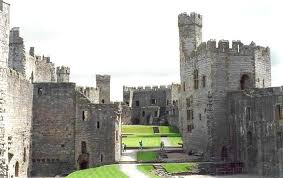Silly Straws
You will need:
Scissors
Straw
Steps:
Flatten the end and cut it to a point.
Flatten the end again.
Insert the sharp end into your mouth and blow. You should hear silly sounds.
What is happening?
As you sharpen the ends the types of vibrations change.
Contraptioneering
A contraption is a complex machine used to do something simple.
Pepper Scatter (Experiment 2)
This experiment is just a fun way to learn about surface tension.
You will need:
A flat dish full of water
Finely ground pepper
A toothpick
Washing up liquid
How to do:
1. Scatter the pepper over the dish.
2. Dip the toothpick into the middle of the dish. Nothing much happens.
3. Now cover the toothpick with washing up liquid and dip it into the middle of the dish. Ka Bang! The pepper moves to the edge of the dish!
What is happening?
Because of surface tension the water has a slight bump in the middle which is destroyed when the water comes into contact with soap or washing up liquid. When the bump is destroyed water flows towards the edge of the dish carrying the pepper with it.
Experiment 1: The Two Glasses
This is an interesting experiment about capillarity, although it does not always work.
What you need:
1 Tissue
2 Glasses
Some water
How to conduct:
1. Fill 1 glass with water.
2. Place the 2 glasses together.
3. Twist the tissue and insert one end into each glass. Note: Make sure that tissue touches the water.
4. Wait. Remember to check on the glasses every half hour.
What is happening:
Because of capillarity the water rises through the tissue and flows into the other glass until the level of water is the same in both glasses (communicating vessels).
Interesting:
That not a single drop of water is spilled and note that it slows down towards the end as the suction pull is getting weaker.
Uses:
When people went on holidays they often used such a device between a pot plant and water bucket. This worked because they used a thinner string.
Building Buildings
Technology is everywhere, in every building we see and every device we use. Without technology we are nothing. This post is about building using technology.
Right now we use technology to build structures, like the massive Ferris Wheel. Imagine how many giant cranes were used to build the Ferris wheel and other structures.
But here is the amazing bit, if we need cranes to build structures and buildings then how did Egyptians build their pyramids?
 (The largest pyramid is the Pyramid of Giza measuring almost 600 metres in height.)
(The largest pyramid is the Pyramid of Giza measuring almost 600 metres in height.)
The answer to the building of the pyramids has one simple part. The huge blocks would have been pulled up mud ramps on wooden rollers using oxen. But the rest is a mystery. Which secrets of construction have been lost to the ages?
Which other buildings fascinate us? Yes, the castles and fortresses of ancient times! How were these built. Some of the machines used in these times where the treadwheel crane, pulleys and wheelbarrows. Apart from this there was usually raw human strength involved.
Constructing castles was very expensive. The best castles included battlements loopholes (arrow slits), keeps, gatehouses and a lot of other features.
Again I ask you which knowledge has been lost?
-
Join 1 other subscriber
-
Recent Posts
Archives
Categories
Meta






